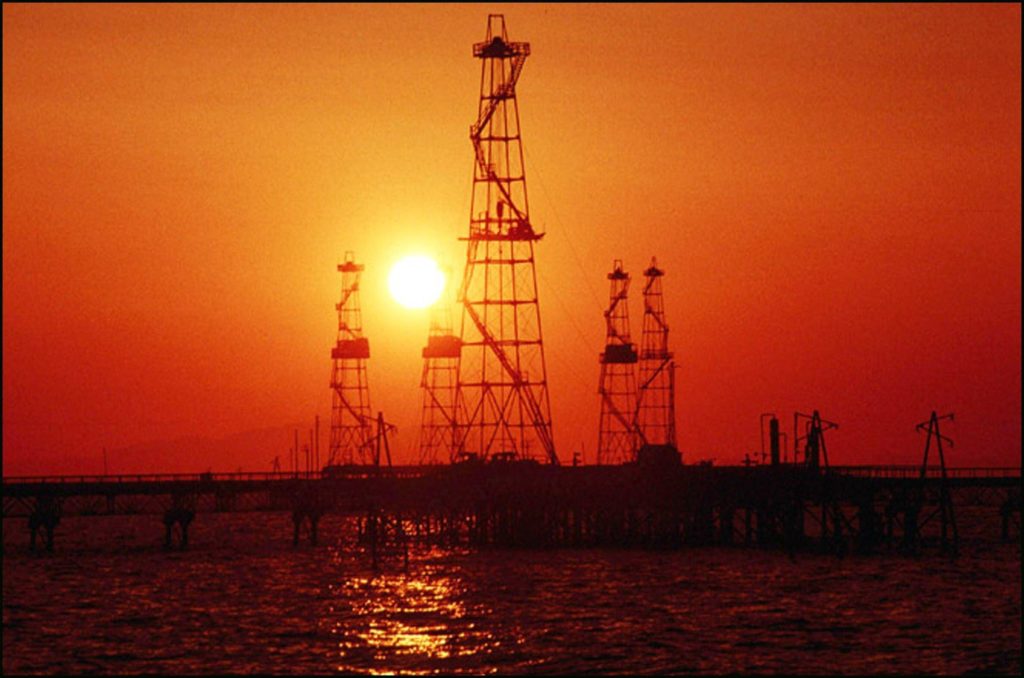BAKU
Azerbaijan rapidly boosts revenues from oil and gas exports thanks to a record increase in world prices due to the West’s concern over the economic impact of Russia’s aggression against Ukraine.
Russia launched its long-feared attack on Ukraine, striking major cities and strategic sites over a wide geographical area in an operation described by Kremlin leader Vladimir Putin as a swoop to “demilitarise and denazify” but not to occupy its ex-Soviet neighbour.
Azerbaijan exports oil in three directions: through the Russian port of Novorossiisk (Urals blend), through the Georgian Black Sea port of Supsa (Azeri Light) and through the Mediterranean Turkish port of Ceyhan (Azeri Light, which comes with a premium to Brent).
The price of the Black Sea and Mediterranean grades of Azeri oil reached $115 per barrel (CIF Augusta with a premium of $2.2 per barrel to Brent, which reached $113 per barrel) for the first time since 2014, an informed source at the state energy firm SOCAR told the Tribune.
The lowest volumes of oil from Azerbaijan is pumped through Russia. In March, it is planned to ship an average of 17,000 barrels per day (bpd) or 80,000 tonnes of oil from Baku via the Baku-Novorossiisk pipeline, 50 percent less than in February this year.
The largest volume of Azeri oil exports go through the Baku-Tbilisi-Ceyhan (BTC) oil pipeline – about 460,000 bpd in February and the same volume is scheduled for March 2022.
According to the OPEC+ group of oil-producing nations deal, Azerbaijan’s oil production quota is growing monthly.
As the COVID-19 pandemic disrupted production as well as demand for oil, OPEC+, a group of the Organisation of the Petroleum Exporting Countries (OPEC) and allied producers of which Azerbaijan is a member, cut output by a little more than 7 million bpd to support prices and reduce oversupply. Other former Soviet oil-producing countries, Russia and Kazakhstan, are also OPEC+ members.
In April 2021, members of the group agreed to ease cuts gradually from May. The new deal agreed in September envisaged a further increase by 400,000 bpd “until the parties agree to lift the restrictions”, but Azerbaijan’s oil production would still be below 718,000 bpd produced in October 2018, when members of OPEC+ agreed to reduce oil production gradually. Baku welcomed the decision to boost production levels.
Azerbaijan is now set to produce 675,000 bpd in March and 682,000 bpd in April.
The country’s state budget for this year is based on an average oil price of $50 per barrel and the oil sector should cover 55 percent of the state budget revenues.
However, in reality, the average price of Azeri oil will be at least twice as much amid a deficit on the world oil market and fears of a reduction in oil supplies from Russia, one of the major suppliers globally.
The lowest price for Azeri oil, $15.81 per barrel, was recorded on April 21, 2020, the highest, $149.66 per barrel, in July 2008. In 2021, the average price for Azeri Light on CIF delivery terms was $71.6 per barrel compared to $43.7 per barrel in 2020.
As for the export of gas to Europe, it is carried out under contracts that had been signed with nine European companies in 2013 as well as on the spot market. In the first case, Azeri gas from the second stage of a major Shah Deniz field is sold for an average price of $250-300 per 1,000 cubic metres, while trading on the spot market is now more profitable as the spot price of gas in Europe last week reached $2,227 per 1,000 cubic metres, according to the ICE Futures exchange data.
The opening of the Southern Gas Corridor in December 2020 allowed Azerbaijan to start gas exports to Europe, giving the ex-Soviet country the means to increase its share in the market, until now dominated by Russia.
The BP-led consortium, which develops the project, has been pumping gas from the offshore field’s first phase since 2006, delivering more than 10 bcm a year of gas to Azerbaijan, Georgia and Turkey. The second phase started output in 2018, adding 16 billion cubic metres (bcm) of gas production capacity at its peak to bring total capacity to 26 bcm.
Azerbaijan has certain free volumes of gas to sell on the European spot market, mainly on the Italian gas hub Punto di Scambio Virtuale, the second most important after TTF till July this year.
Azerbaijan Gas Supply Company has been selling at least 1 million cubic metres of gas per day from Shah Deniz on the spot market since the beginning of 2022, and on some days such volumes reach up to 2 million cubic metres per day, an informed source at SOCAR told the Tribune.
About 30 million cubic metres of gas per day from Shah Deniz are delivered to Europe. The rest is exported to neighbouring Georgia and Turkey and used for domestic consumption.
In January, Gas exports from the Shah Deniz field rose by 4.7 percent year-on-year to 1.683 bcm. The share of gas exports in Azerbaijan’s total exports was 26.02 percent.
In 2021, Azerbaijan exported 28.1 million tonnes of oil and around 19 bcm of gas. The country earned $13.9 billion from oil sales and $6.5 billion from sales of natural gas. In 2022, Europe can receive almost 11 bcm of gas from Shah Deniz.

